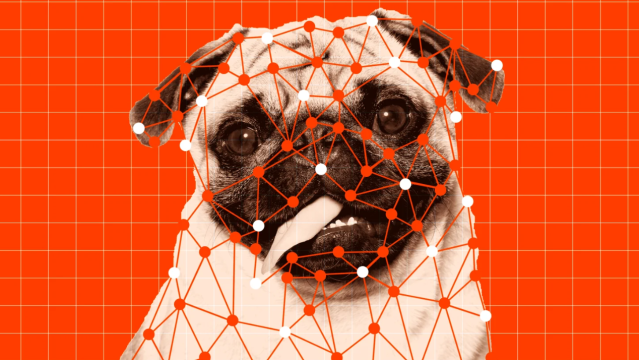I don’t even know when it happened. There was no childhood neighbour with a pug in tow; no famous TV or movie depiction that played over and over in my head growing up. All I know is that I entered my 20s with a healthy appreciation of dogs in general, good boys and girls that they are, but I left them with a profound fascination of all things pug.
Their faces look like the aftermath of a Play-Doh session with a room of kindergarteners. The cacophony of random snorts and grunts they make could fill an opera house, though no one would pay to listen to them. Even their name ” PUG ” seems too absurd to be real, a meaningless syllable you’d spot in a word-search puzzle. Yet, I adore every face fold, snore, and letter of the pug.
A long time ago, though, I decided I would never buy a pug, for one simple reason: They’re a genetic tragedy worthy of Shakespeare. Their smushed-in faces betray a skeletal structure that makes them prone to a variety of health problems, including trouble breathing, seizures, and displaced hips. And they’re not the only dogs with a similar predicament. Bulldogs, Boston terriers, mastiffs, and others are also defined by short muzzles and wonky skeletons that imperil them to health problems throughout their lives ” their plight an example of the unintended consequences of human-guided dog breeding over the past century and more. Collectively, these dogs are called brachycephalic breeds.
For years, there’s been brewing tension between dog breeders, veterinarians, animal rights activists, and even lawmakers over pugs and similar dogs.
Many breeders and breeding clubs insist that current guidelines are enough to eventually steer these dogs to a healthier shape or that there isn’t much of a problem at all. But at least one veterinary organisation in the UK now tries to discourage people from buying or popularising these dogs. Recently, the Netherlands passed the strictest regulations on the breeding of brachycephalic dogs, in what some have called an effective ban within the country. Meanwhile, a small segment of breeders are experimenting with so-called “retropugs” ” dogs that more closely resemble the pug in its earliest years as an established breed, centuries ago.
All of this leaves me to ask: Is there a future in which the pug can be saved from the devastating genetic fate that our meddling hands created? And what would that future look like?
Purebred dogs in general are often at higher risk of illness due to their genetics. The very nature of dog breeding starting in the mid-19th century, when breed standards started to be established by clubs that ran show competitions and dogs became more companion animals than working beasts, has led us down this path. The choice to amplify certain physical or personality traits, generation after generation, often required lots of inbreeding to accomplish. Over time, this diminished the genetic diversity of these breeds, and when that happens, harmful mutations are more likely to show up, and a breed’s carefully crafted appearance may start to come with an added price.
In the case of pugs and pug-like dogs, there’s a glaring incompatibility between their skulls and the rest of their anatomy, according to Nai-Chieh Liu, a veterinary researcher at the University of Cambridge who studies these breeds. Their skulls have gotten smaller and smaller, but the soft tissue in and around their airways, including the tongue, hasn’t proportionally shrunk as much. This extra soft tissue can obstruct the pug’s airway and make it harder for them to breathe and function normally, leading to a condition called brachycephalic obstructive airway syndrome, or BOAS.
Not all dogs with BOAS suffer badly from it, especially with treatment, but it can undoubtedly raise a dog’s risk of health problems like hypertension, fluid build-up in the lungs, and even heart failure. Another common risk is overheating, since dogs don’t have sweat glands and BOAS can muck with their ability to pant, a dog’s main way to cool down naturally. BOAS can be managed partly by keeping a pug relatively fit (obesity makes it worse), but many end up needing surgery to remove tissue that’s blocking their airway to live a somewhat healthy life. And BOAS isn’t the only condition that pugs are more likely to develop because of their skeletons or body shape ” their hips often end up displaced as they age; their bugged-out eyes can make injury more common; and they’re vulnerable to a neurological condition known as pug dog encephalitis.
These health problems haven’t stopped pugs and other brachycephalic breeds from winning the hearts of many, especially thanks to their popularity across social media. This fascination has predictably caused their popularity to rise over the years. According to the American Kennel Club, French bulldogs were the fourth-most popular breed registered in the U.S. in 2019, having jumped five spots since 2014; pugs were the 31st in 2019, having moved up two spots since 2014. In the UK, Frenchies were the second-most popular breed registered last year, while pugs were ninth. Annual registrations of pugs have also shot up fivefold since 2003 in the UK, according to data from The Kennel Club.
In 2016, faced with the popularity of these breeds, the British Veterinary Association issued a stern piece of advice to prospective dog owners: Stop buying pugs and other flat-faced breeds.
“The surge in popularity of these dogs has increased animal suffering and resulted in unwell pets for owners, so we strongly encourage people to think about choosing a healthier breed or crossbreed instead,” BVA president Sean Wensley said at the time.
The BVA’s current position on brachycephalic breeds, updated as of 2018, doesn’t explicitly tell people to not buy pug-like dogs. But in addition to promoting cooperation between vets, breeders, and owners to secure a better future for these dogs, it calls for “avoiding imagery of brachycephalic dogs in advertising, marketing materials and social media campaigns to reduce demand and prevent the normalization of their associated health issues.”
While organisations like the BVA and researchers like Nai-Chieh Liu are still trying to work with breeders and kennel clubs to reduce the incidence of these health problems through more careful but largely voluntary breeding practices, at least one country has taken a more drastic approach. In May 2019, the Netherlands government announced that it would start strictly enforcing animal welfare laws already on the books since 2014.
Under its new “traffic light” system, any dogs bred in the country will have to eventually meet six criteria of health, most prominently involving the length of their muzzle. “Green light” dogs would all have muzzles that are no less than half the length of their skull (also known as the dog’s craniofacial ratio, or CFR, with healthy being at or above 0.5). “Orange light” dogs would have a CFR between 0.3 and 0.5 and still be allowed to breed, provided their health was otherwise good. Even there, though, the express goal is that the puppies from these breeding lines reach green-light status within two to three generations. “Red light” dogs, with CFRs below 0.3, would be considered ineligible for breeding at all.
In May, the Raad van Beheer op Kynologisch Gebied, internationally recognised as the Netherlands’ official kennel club (and known as the Dutch Kennel Club in English) announced that, despite taking issue with some aspects of the new system, it would abide by the rules and limit registration of brachycephalic breeds, 12 in total. Purebred dogs that did not meet the criteria would not be eligible for a full pedigree, a designation that denotes a dog belonging to a specific breed eligible for future breeding, while also detailing its ancestry. The club did carve out an exception to the rules, such that dogs can be considered for a full pedigree if one of their parents had a CFR below 0.3 but was in good health and the other parent met all six criteria.
Many organisations elsewhere were quick to distance themselves from the Dutch Kennel Club’s decision and the new law. The UK’s The Kennel Club stated that it did not support the regulations, as did the American Kennel Club (AKC). In an open letter to the Dutch Kennel Club this May, the AKC wrote that “restricting registration based on physical characteristics will make it impossible for responsible breeders to continue to”¯improve the health and conformation [shape] of that breed within the structured world of kennel clubs.” Others accused the Dutch Kennel Club of violating the rules of the Federacion Cynologique Internationale, or FCI, the governing body of kennel clubs in nearly 100 countries (notable exceptions include the U.S. and UK).
In the letter announcing the decision, Dutch Kennel Club director Rony Doedijns was more nuanced (another letter refuted the claims that it was violating FCI guidelines). He criticised the government for downplaying the efforts made by breeders and organisations like the Dutch Kennel Club to promote better breeding standards in recent years; for not seeking their input in how to design the new system; and for not considering other recommendations made after the regulations were released publicly, such as extending the law to imported dogs. But he also noted that breeders and other interested parties probably haven’t done all they could to ensure the health of extremely short-faced dogs and that it might not be such a bad thing for dogs like the bulldog and pug to resemble what they used to look like even 60 years ago.
“We do hope that kennel clubs, breeders, judges, and owners will come to the realisation that we must modernise our way of thinking and that the health and well-being of our breeds are our top priority,” Doedijns told Gizmodo via email.
One group who weren’t disappointed in the slightest by the Dutch law were animal rights activists, including those in the Netherlands.
“These problems have been known about for more than 100 years, and over time, the features have gotten more and more extreme,” Kelly Kessen, a veterinarian and member of Dier & Recht, an animal advocacy group in Holland that worked with the Dutch government along with other welfare organisations on the new system, told Gizmodo. “So these breeding clubs are not capable of change, because they don’t acknowledge the problem enough to change.”
Even before the Dutch law came to pass, there were some people who have tried to find a way to keep pugs healthy by working outside the conventions of typical breeding. In Germany and other European countries, there’s a variant of pug known as the altdeutsche Möpse, or “old German pug” (pugs are also called “mops” in parts of Europe). These pugs are described as sportier, healthier versions of the pug we know today, said to be produced from purebred breeding lines that have been established for years. Beyond these, there are also breeders who are crossing pugs with other breeds to purposefully create dogs that harken back to the pugs of the 16th and 17th century, when the first protopugs that left their ancestral home in China were introduced to Europe and were bred with other dogs. These modern dogs are known as Retromöpse, or retropugs.
“About 20 years ago, I started breeding boxers; then 10 years ago, I started with pugs. But I kept noticing that they couldn’t do what other dogs can when the weather is warm and the sun is shining ” they’re lying under the table while the other dogs are running around. So I thought something had to change,” Meranda Stark, a breeder in the Netherlands who has been breeding retropugs for the past two years, told Gizmodo by phone.
When dogs are cross-bred with breeds without any recent shared ancestry, it’s known as outcrossing. Stark’s earlier attempts to selectively breed for healthier purebred pugs did work to an extent, but it wasn’t enough, in her opinion. She then turned to outcrossing. So far, she’s experimented with shiba inus, various breeds of terrier, and poodles; she’s also bred retropugs with purebred pugs, in what breeders call backcrossing.
At this point, her dogs have produced 10 litters of retropugs. Aside from having a longer nose, Stark says that retropugs are just generally more athletic, muscular, and have longer necks than the typical pug today. These pugs, Stark said, have gone through more extensive health tests than pedigree breeds are expected to go through, including added genetic testing, and they appear to be healthier than pugs in general.
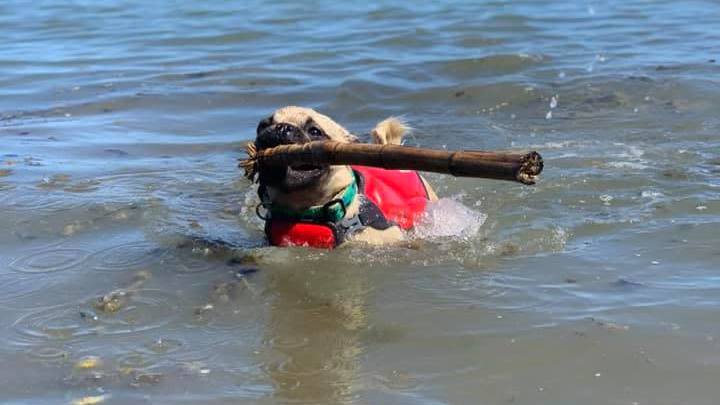
“I didn’t want my son to go through the heartbreak of having a dog with really expensive and heartbreaking health issues, which is obviously not a given, but I wanted to lower the chances of that…I also wanted a dog that would swim, since we live in California, and it gets really hot for dogs.” Lauren Fetterman, owner of a group dog-walking business in California, told Gizmodo. Last year, Fetterman and her family bought Eugene, a second-generation and now 10-month-old retropug that’s three-quarters pug and one-quarter Staffordshire bull terrier, from Stark. “And sure enough, I have a swimming pug now. Put a life jacket on him, and he’ll leap in the water, he’ll retrieve ” my vet calls him turbo pug. He’s really a whole lot of fun.”
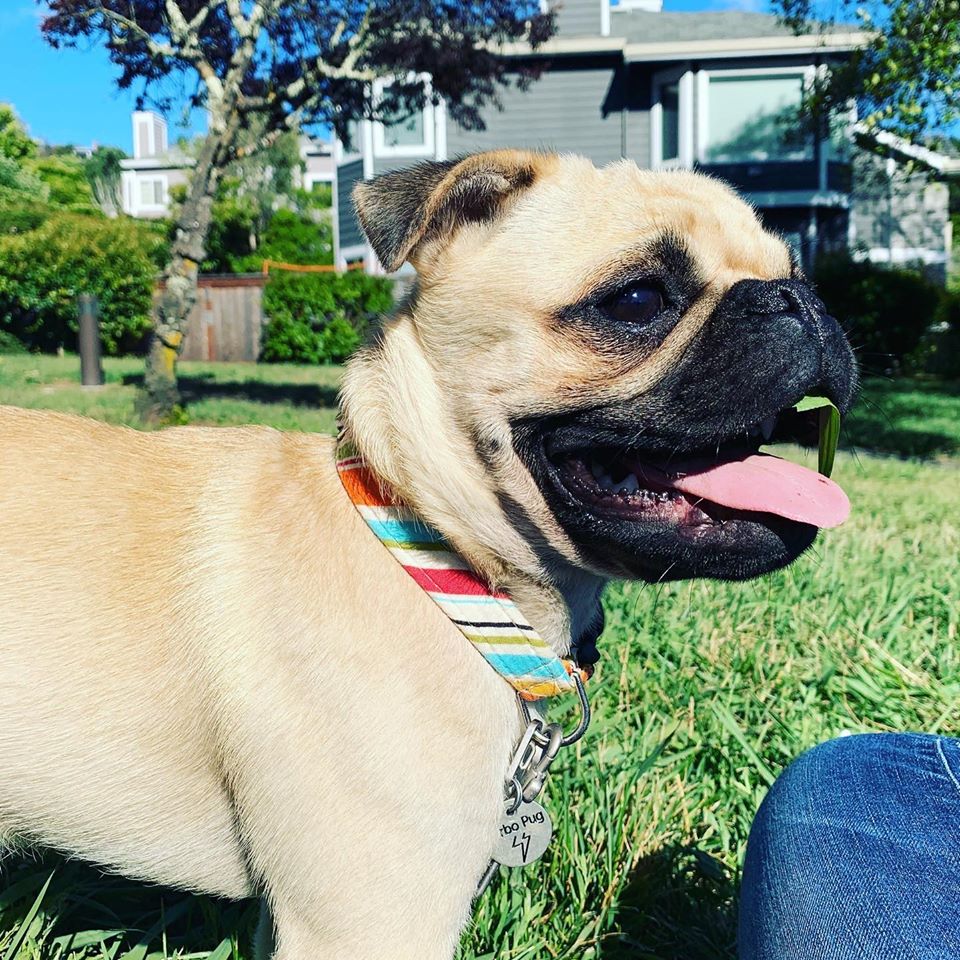
The retropug movement is still very nascent. At the time, Fetterman wasn’t able to find anyone similar to Stark and other retropug breeders in the U.S. or Canada, though she’s since come across at least one hobbyist stateside. Stark is now part of a small organisation based in the Netherlands, called Dogs Connected, with plans to create an English-language website. Their goal is to establish a network that makes it easier for breeders and potential owners to swap information and raise awareness about genetically healthy and outcrossed dogs like the retropug. They’ve also devised their own extra set of criteria that dogs have to meet before they’re endorsed as suitable breeding partners by the organisation, which includes higher genetic diversity. Some retropug breeders have also recently established their own specific breeder’s association, called the International Retro Pug club, with breeders from Sweden, Germany, and Denmark.
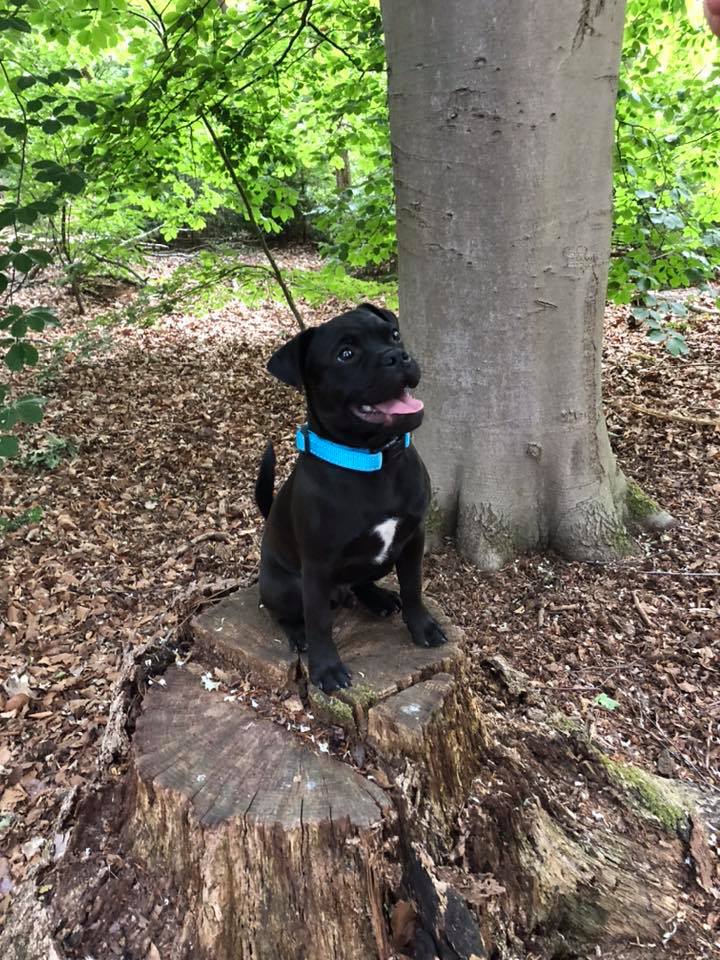
Stark said she’s been in talks with researchers at the University of Utrecht, which released a report on the health of brachycephalic breeds, to study her retropugs. She hopes to confirm their superior health compared to the classic version. One lesson she’s learned is that breeding first-generation retropugs with purebred pugs often results in dogs with shorter noses, although these dogs still seem to be healthier than the pugs they came from.
The Dutch Kennel Club, Doedijns said, is looking to ratify a policy soon that would allow the puppies born to parents that don’t meet the traffic light guidelines to still be listed in a separate registry, with the hope that they may be suitable to receive a full pedigree as adults. Though there is the possibility that lookalike dogs such as the retropugs could someday be registered by the Dutch Kennel Club as an established breed, that’s something that would take several generations of dogs to even be up for discussion, the organisation has said, and it will not be issuing full pedigrees to any crossbreeds at this time. The Dutch Kennel Club has also now created agreements with local breeding clubs to work out how the future breeding of their respective dogs can still proceed under the law, which will include new health screening standards.
There is precedent for healthier hybrid versions of a purebred to eventually be officially accepted as part of the breed. In the 1970s, scientists bred Dalmatians with a English pointer, successfully reintroducing a gene that allowed their offspring to produce lower levels of uric acid ” a trait lost from the very small gene pool of purebred Dalmatians that greatly raised their risk of kidney, liver, and bladder problems. Only the first generation of these dogs had a non-Dalmatian parent, and subsequent generations all bred with other Dalmatians, meaning the latest generations were 99% per cent Dalmatian. But it took until 2011 for the American Kennel Club to allow their registration as Dalmatians, and even that decision barely won approval by a slight majority of voting members. They’re known as backcross or low uric acid Dalmatians.
Stark said that she herself won’t be breeding retropugs with 85% or more pug ancestry, over the worry that they’ll have too-small noses. Right now, some of her dogs still have a CFR under 0.5, and she and other breeders are trying to devise the best way to breed retropugs that will continue to look like pugs for successive generations, even as their noses remain longer. She also hopes that someday her dogs and other retropugs will be allowed registration in the Dutch Kennel Club.
I asked Nai-Chieh Liu if she thought outcrossing could be the best way to ensure the health of dogs like pugs in the future. She said that it may turn out to be the ultimate solution, but for now, it’s not practical on a large scale and isn’t guaranteed to result in healthier dogs, noting that she’s come across a Jack Russell terrier/pug hybrid that still had severe BOAS. At the moment, she and other researchers are trying to develop a genetic test that can more easily predict the odds of a dog developing BOAS, and she still holds out hope that careful purebred breeding can continue to improve the health of pug-like dogs.
When I reached out to the Pug Dog Club of America about their thoughts on the Dutch law and the Dutch Kennel Club’s decision to stand by it, a representative pointed me to an open letter on their website. Like the American Kennel Club, the letter is very critical of the idea of a government imposing any restrictions on breeding practices. Instead, it argues, governments should be cracking down on bad breeders; that responsible breeders are already doing enough to weed out pugs with suspect genes and health problems; and crossbreeding is absolutely not a solution that should be considered. It also states that a “longer muzzle does not ensure a dog is healthy.” But though it’s true that simply having a longer muzzle isn’t enough to assure that a dog will live a long, healthy life, evidence also suggests that the shorter the muzzle, the higher the risk of that dog developing BOAS (that said, muzzle length alone may not be the most accurate predictor of BOAS, compared to other physical signs like narrow nostrils, in all brachycephalic breeds).
Stark is no stranger to hostility from other breeders over what her dogs represent, including accusations that she’s destroying the very essence of what makes a pug a pug.
“At one time, I had 15 pugs, and not one of them was the same. Some wanted to lie down all day; some wanted to play in the garden. It’s the same with outcrossed dogs ” they are all different and have their own character,” she said. “But when I look at my dogs now, they’re all sweet, kind, loving dogs that want to lay on my lap on the couch, same as the pug. They’re just in much better condition. They can run, they can jump, and most pugs don’t do that as much as they do.”
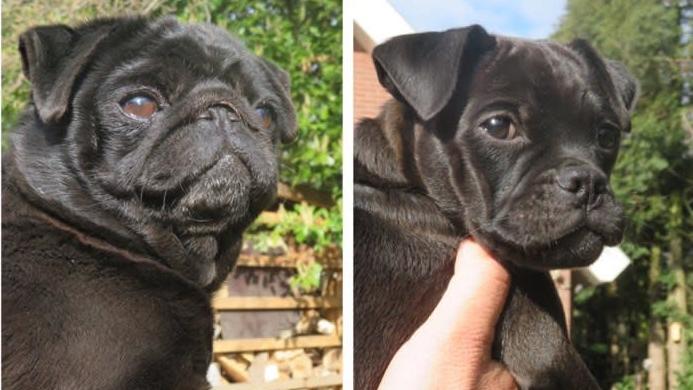
I don’t doubt the sincerity and conviction of breeders and owners who say they’re doing right by the pug. But I do think it’s possible that they’re seeing the situation through rose-coloured glasses.
A study published last year asked more than 2,000 owners of brachycephalic dogs, including over 700 pug owners, to evaluate their dog’s health. One-fifth reported their dogs had needed surgery to breathe better; over one-third reported that their dogs had trouble not getting overheated; and over 17% said their dogs had breathing problems. But only 7% said their dogs were less healthy than the average dog of their breed, while over 70% per cent said their dogs were in very good or tiptop shape for their breed. Interestingly, among different breeds, it was pug owners who rated the highest in being emotionally connected to their dogs. Another study, from 2018, found that one in three pugs had trouble walking and also noted that owners were less likely to notice these problems than vets who simply watched home videos of the pugs in their natural environment.
Wading through this back-and-forth, I couldn’t help but wonder about the collective obligation we have to dogs. Dogs, more than any other animal, have been humanity’s partner through the bleak, painful, and sometimes joyful experience that is civilisation. They’ve been our neighbours, our co-workers, and our family ” a gift of unspoken, unwavering companionship. The very least we owe them is a life unburdened as much as possible by the bad choices we make.
A pug is a dog that we call a pug. And I’ll love them no matter what they may end up looking like 10, 20, or 30 years from now. For their sake, I hope they’re as healthy as they deserve to be.
